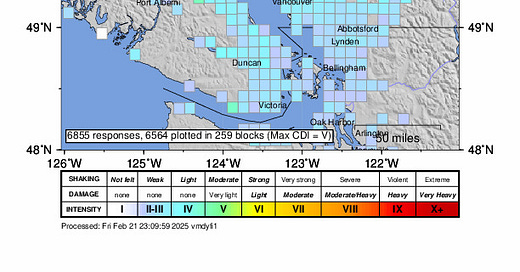M4.8 rattles Vancouver
Shallow crustal faulting above the Cascadia subduction zone
Citation: Bradley, K., Hubbard, J., 2025. M4.8 rattles Vancouver. Earthquake Insights, https://doi.org/10.62481/a56c5dc1
Earthquake Insights is an ad-free newsletter written by two independent earthquake scientists. Our posts are written for a general audience, with some advanced science thrown in! To get these posts delivered by email, become a free sub…
Keep reading with a 7-day free trial
Subscribe to Earthquake Insights to keep reading this post and get 7 days of free access to the full post archives.




